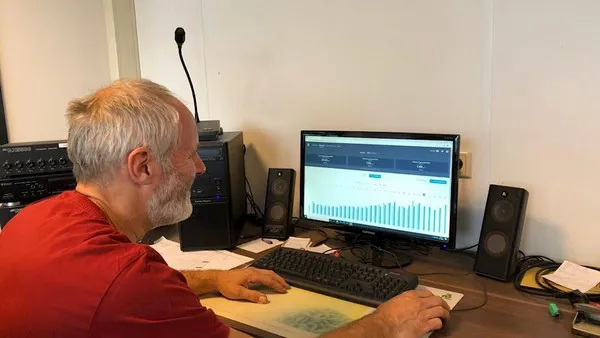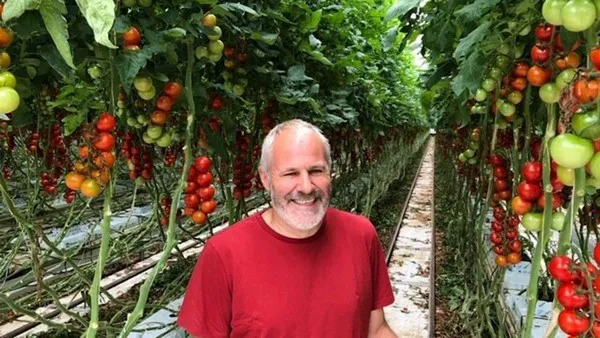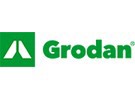Erwin Theeuwen grows cocktail tomatoes in Wellerlooi in Limburg with his former classmate, Ger Derikx. As one of the first users of the system Derikx has gathered a year of experience using e-Gro, the software platform for data-driven Precision Growing. Through each stage in the growing season he is discovering the advantages of this platform and how to leverage his data in meaningful ways.
Tomato nursery Theeuwen is a family-run business that has existed for more than fifty years. The company covers 7 hectares and produces tomatoes year round. The greenhouse supplies two main markets: the best tomatoes go to a trading company in bulk where they are then broken down and packaged. The remaining inventory goes to the German market.
"We cultivate the Brioso variety here," Ger Derikx says. "That's a flavourful cocktail tomato weighing about 40 grams." That's a completely different crop than cucumbers, which he cultivated himself. Derikx had a cucumber farm in nearby Melderslo until 2015 and occasionally grew tomatoes in the autumn. What does he think is the difference between cultivating tomatoes and cucumbers? "Tomatoes give you a little more control over cultivation. A little more regularity. At times cultivating cucumbers can feel like you’re running and other times like you’re standing still."
Introduction to e-Gro
e-Gro collects data from the root zone and captures key irrigation to climate data. It also allows you to convert key information, such as crop registration and harvest quantities, into an organized and accessible digital format. All of this information is combined so the grower then gets a real-time picture of his greenhouse on one central dashboard. The program also interprets the data and provides simple recommendations and suggestions to help in the growing process.

Theeuwen has been using Grodan's stone wool substrates for some time now. This made them a natural fit for the system so Account manager Frank Janssen from Grodan drew the company's attention to the e-Gro software.
"We absolutely wanted to give it a try," confirms Derikx. "So we started working with it last fall. Data-driven cultivation is important to us and that's why we process crop and production data in the program. In the beginning, we still had to learn a lot and put a lot of time into it. After six months, it's becoming easier and easier."
Even plant load with e-Gro
Vegetative and generative steering of the crop is important for tomato cultivation. An even plant load ultimately results in a crop that is a consistent quality and more predictable yield. To determine this, the grower takes measurements from a selection of twelve-to-thirteen plants. He counts the fruits and truss height manually in addition to head thickness, length, height and thickness of the truss.

e-Gro calculates the crop balance based on these measurements. The program indicates whether the crop is growing generatively or vegetatively. "Actually, it fits quite well", Ger says, looking at the program. "There are hardly any abnormalities, I'm mostly positive. I expect as the system continues to capture and analyse data it will be able to predict even more”.
“The bulk of the effort goes into taking the measurements. It is easy to put them into the system and once they are entered e-Gro performs a lot of calculations for us that ultimately saves us time”.
Data-driven cultivation
e-Gro has been developed, among other things, to visualise and optimise the root environment. Proper irrigation events largely determine the success of a tomato cultivation. "I am actively involved in watering, the frequency and volume of drips and the smearing of the mat after the last drip.
“I use the Conditions Module and Dashboard to monitor the crop control indicators. For example, I analyse the real-time KPIs to see what the average water intake of the stone wool mat was during the night. I can then see if that was a generative or vegetative action and adjust accordingly. This gives me more insight into the cultivation growth and based on this information I can make better cultivation decisions. It has become an important part of my day.”
Added value
Ger indicates that e-Gro can help monitor the crop and is a great teaching tool. "People who are less experienced in the industry should be able to build their knowledge from this program and help them become a better grower. This will be increasingly necessary in the future.”
Additionally, a good harvest forecast is important in order for the company to send reliable information to its customers. “Any harvest forecast needs to be accurate and adaptive in order for it to be useful," he says. Our current forecast provides predictions up to four weeks in advance, taking into account variables such as the weather and historical harvests. That forecast is of great value to our customers. “A program that can support this harvest forecast is of added value to me”, says Ger. “This feature in e-Gro is adding a lot of value to our company at the moment.”
For more information:
Grodan
www.grodan.com
